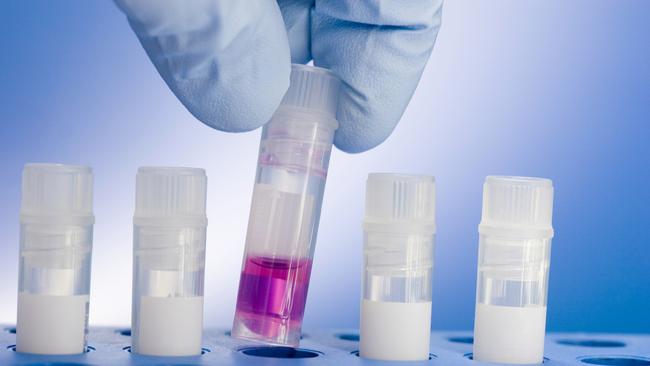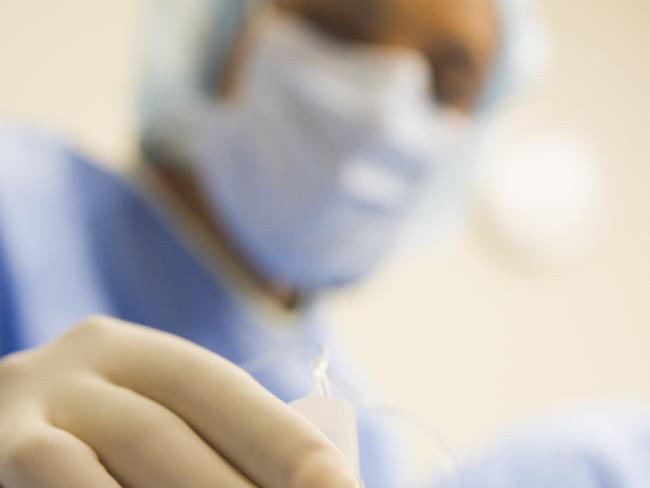Victorian Assisted Reproductive Treatment Authority annual report reveals a series of blunders
IVF watchdog slams clinics for selling these unproven, expensive extras with little evidence they help women fall pregnant or are even safe to use.

Victoria
Don't miss out on the headlines from Victoria. Followed categories will be added to My News.
A patient’s precious embryo was “inadvertently discarded” and 10 eggs had to be destroyed after they were contaminated in a series of IVF blunders.
The Victorian Assisted Reproductive Treatment Authority received reports of more than 90 adverse events last financial year, including six serious cases which saw families lose embryos, eggs or sperm.
The shocking failures were revealed in the authority’s annual report, published on Wednesday, which also slammed IVF providers for selling unproven “experimental” add-ons to patients desperate for a baby.
Clinics were reminded they cannot offer optional extras – such as endometrial scratching and immunotherapies – without clearly explaining the potential risks and benefits.
Patients were warned that many add-ons had little evidence to show they would improve their chances of falling pregnant.
“Despite their widespread use, most IVF add-ons are not supported by robust evidence that they increase conception or live birth, or are safe to use,” the report said.

It comes amid an ongoing class action against leading fertility clinic Monash IVF, which, it is claimed, continued to promote and use a test despite knowing for months it was faulty and could result in healthy embryos being needlessly destroyed.
The report revealed more than 16,000 women underwent treatment cycles last year, meaning adverse incidents impacted a small percentage of patients, but for those individuals the consequences could have been devastating.
The individual clinics involved were not named and it’s not known whether affected patients could create more embryos, or if they represented their last shot at having a baby.

But the report detailed heartbreaking “scientific adverse events”, including one where an embryo was damaged during transport between the laboratory and theatre.
Another case saw a viable embryo “inadvertently discarded” – and a further five eggs from different families lost – after two human error incidents during “label check procedures”.
The biggest loss was a “rare case of bacterial contamination of cultures resulting in 10 lost eggs”, with another two eggs ruined by a “manual handling error” when the laboratory went to freeze them.
Five sperm vials had to be thrown out after a “delay in replacing equipment” caused them to thaw, while another straw of sperm was lost after the clinic discovered the straw’s seal had been damaged.
The report said this occurred despite the fact it was “generally accepted” freezing items in plastic straws long term can result in seals breaking.
The adverse incident figures included 53 cases where women were hospitalised overnight for ovarian hyperstimulation syndrome, a rare complication that can occur in IVF.
The regulator was also “concerned” by the “widespread use” of IVF add-ons, and urged patients to reconsider whether money put towards expensive extras should instead be saved for an extra cycle.
“Many add-ons are experimental, have not been thoroughly tested, or have been studied with limitations, such as small sample sizes, risk of bias and insufficient data,” the report stated.
“Despite their widespread use, most IVF add-ons are not supported by robust evidence that they increase conception or live birth, or are safe to use.
“Examples [of IVF add-ons] include endometrial scratching, intracytoplasmic magnification selected sperm injection (IMSI), immunotherapies and preimplantation genetic testing for aneuploidy (PGT-A).”
The report stated clinics, in response to their concerns, confirmed they gave patients “clear information about add-on risks and benefits” and also listed procedures the regulator did not consider experimental.
Data on IVF success rates for the most recent financial year was not available in the report, but the report noted 30 per cent of patients who received fertility treatment in 2021-22 gave birth.


